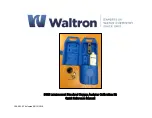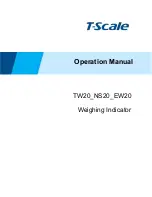
16
Cable Testing General Guidelines
The Snap Shot™ determines the length of a variety of cable types, calculates
the NVP value of a cable with a known length, and identifies cables by sound.
Important Points to Note
The Accessories provided with the Snap Shot™ must be used to properly
connect cables.
▪
For coaxial cables, affix the F-Connector Coupler to the F-Connector
on the top of the unit. Then connect the end of the cable to be tested
to the other side of the F-Connector Coupler.
▪
When testing a cable with an RJ45 jack, connect the F-Connector
Coupler to the F-Connector on the top of the unit. Then attach the
Insulated Push-On F to RJ45 Plug.
▪
To run tests using the Alligator Clips, first affix the F-Connector Coupler
(or F-Jack to BNC Jack) to the top of unit. Then attach the proper Cable
Assembly to Alligator Clip accessory.
Important Safety Points
The Voltage! Icon appears when the voltage surpasses SELV
rating of 60 volts peak AC or DC. It is not recommended to
operate the Snap Shot™ on cable systems exceeding a voltage
value of 60 volts.
If the Voltage! icon appears, the Snap Shot™ should be
disconnected immediately from the source of the voltage.
Internal components of the Snap Shot™ are protected to 400
volts peak AC or DC. Connecting the unit to cabling systems
with voltage above 400 volts peak AC or DC may damage the
test unit and pose a safety hazard for the user.
Using Memory Storage
The Snap Shot™ features two memory storage locations (M1 and M2)
allowing you to save two NVP values for cable testing.
Note:
For the first use of the Memory Storage feature, the default NVP
values for both M1 and M2 storage locations is 84.6 NVP. This is a
common value for testing RG6 coaxial cables.
















































